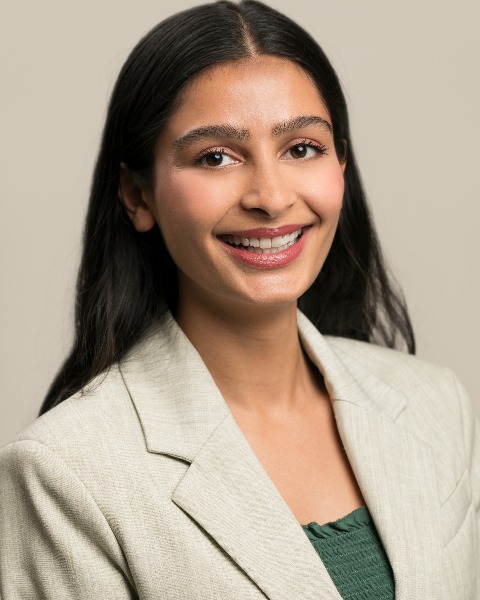Bones, Cartilage & Teeth Posters
Poster: Bones, Cartilage & Teeth Posters
20 - Assessing the Age at Death and Osteological Sex of Deceased Individuals Using Machine Learning
Monday, March 25, 2024
10:15am - 12:15pm US EDT
Location: Sheraton Hall
Poster Board Number: 20
There are separate poster presentation times for odd and even posters.
Odd poster #s – first hour
Even poster #s – second hour
Co-authors:
There are separate poster presentation times for odd and even posters.
Odd poster #s – first hour
Even poster #s – second hour
Co-authors:
-

Eman Faisal, MSc.
Graduate Student
University of Toronto
Newmarket, Ontario, Canada
Presenting Author(s)
Abstract Body : One role of a biological anthropologist involves analyzing skeletonized remains to develop a biological profile (age at death, osteological sex, population affinity, and stature). Narrowing the scope of persons that fit the description of the deceased can facilitate the identification and repatriation process by providing information as to who they were in their lives and what their life history might have been like. It is therefore essential to develop techniques to facilitate identification more efficiently, accurately, and precisely.
The present research is aimed to develop a machine learning (ML) algorithm to assess the age at death and osteological sex of individuals simultaneously using 3D computed tomography (CT) scans of the pelvis to speed up the identification and repatriation process of unidentified individuals.
CT scans were derived from the New Mexico Decedent Image Database and were collected from legal documents, like government ID cards, ensuring that the ML model is trained using highly accurate data to make its assessments. The 3D CT scans were pre-processed using 3D Slicer©, before inputting them into PointNet©, removing material that was unintentionally scanned. PointNet©, an ML algorithm, was further adapted to assess the age at death and osteological sex concurrently, as well as individually. PointNet© was used due to its ability to process 3D point cloud data from CT scans. A total of 427 scans (n = 212 females, and n = 215 males) were used. Seven age ranges were established in 10-year increments from 18-89 years-old. A total of 80% of the data were used for training PointNet© and 20% of the data were used to test the algorithm's efficacy.
Accurate results are defined as those that produce a correct osteological sex assessment and estimate an age range encompassing the true age at death of the individual. Preliminary results indicate that PointNet© has a training accuracy of 98% and is reading the entire sample size (n = 427) in 14 seconds. Accuracy was measured using an F1-score.
These results are significant as they demonstrate the algorithm's ability to train on data with high accuracy, which indicates that the evaluation accuracy (the true efficacy) of the model will be high with the right optimization parameters since the training data is well interpreted by PointNet©.
Using ML models and performing multiple assessments (age and sex) concurrently on bone is largely unexplored in biological anthropology and bioarchaeology and should be addressed to aid the repatriation of remains, providing respect to the deceased, and closure to their families and communities.
This research is funded by Social Sciences and Humanities Research Council (SSHRC).
The present research is aimed to develop a machine learning (ML) algorithm to assess the age at death and osteological sex of individuals simultaneously using 3D computed tomography (CT) scans of the pelvis to speed up the identification and repatriation process of unidentified individuals.
CT scans were derived from the New Mexico Decedent Image Database and were collected from legal documents, like government ID cards, ensuring that the ML model is trained using highly accurate data to make its assessments. The 3D CT scans were pre-processed using 3D Slicer©, before inputting them into PointNet©, removing material that was unintentionally scanned. PointNet©, an ML algorithm, was further adapted to assess the age at death and osteological sex concurrently, as well as individually. PointNet© was used due to its ability to process 3D point cloud data from CT scans. A total of 427 scans (n = 212 females, and n = 215 males) were used. Seven age ranges were established in 10-year increments from 18-89 years-old. A total of 80% of the data were used for training PointNet© and 20% of the data were used to test the algorithm's efficacy.
Accurate results are defined as those that produce a correct osteological sex assessment and estimate an age range encompassing the true age at death of the individual. Preliminary results indicate that PointNet© has a training accuracy of 98% and is reading the entire sample size (n = 427) in 14 seconds. Accuracy was measured using an F1-score.
These results are significant as they demonstrate the algorithm's ability to train on data with high accuracy, which indicates that the evaluation accuracy (the true efficacy) of the model will be high with the right optimization parameters since the training data is well interpreted by PointNet©.
Using ML models and performing multiple assessments (age and sex) concurrently on bone is largely unexplored in biological anthropology and bioarchaeology and should be addressed to aid the repatriation of remains, providing respect to the deceased, and closure to their families and communities.
This research is funded by Social Sciences and Humanities Research Council (SSHRC).

